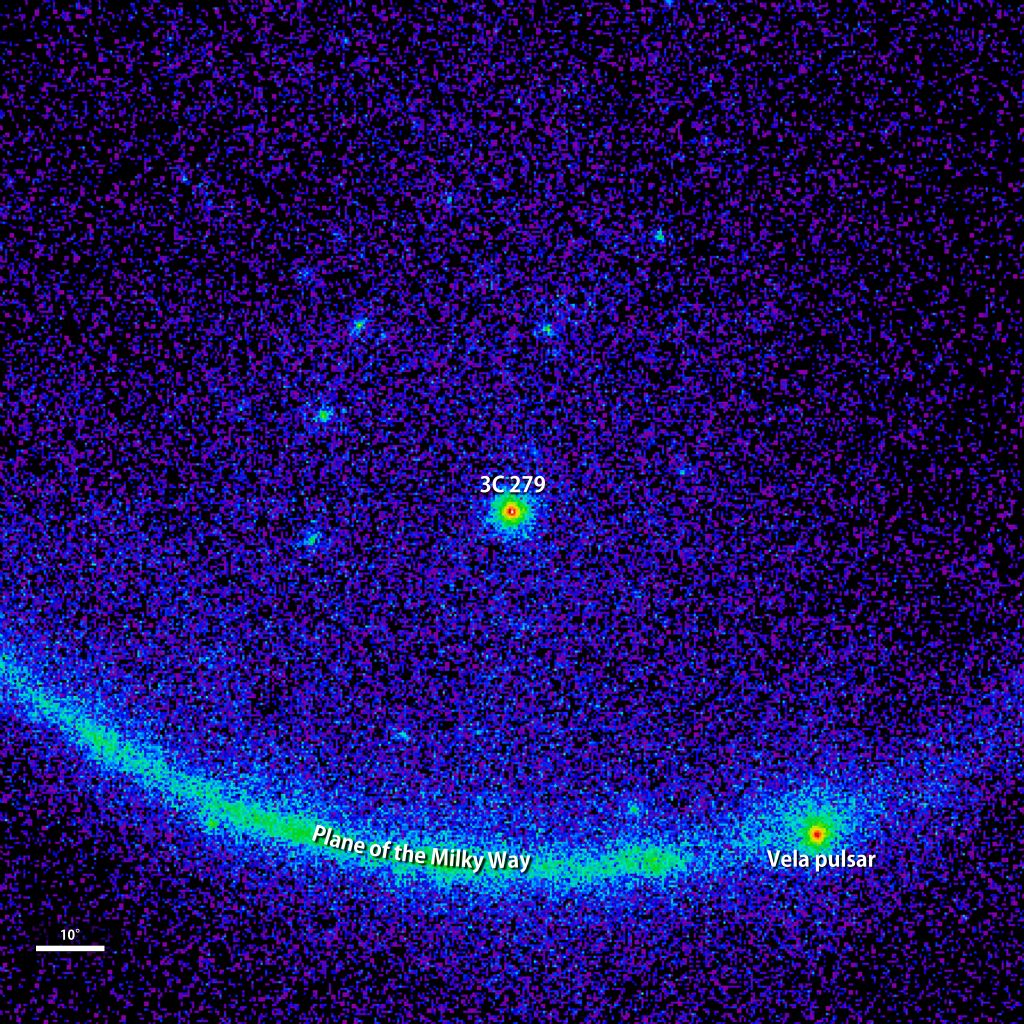In the video below they also show pics from the Fermi device. It is pretty incredible that it took 5 billion years for us to see the record breaking light from the 3c 279.
Narrated video. Zoom into an artist’s rendering of AY Sextantis, a binary star system whose pulsar switched from radio emissions to high-energy gamma rays in 2013. This transition likely means the pulsar’s spin-up process is nearing its end. In late June 2013, an exceptional binary system containing a rapidly spinning neutron star underwent a dramatic change in behavior never before observed. The pulsar’s radio beacon vanished, while at the same time the system brightened fivefold in gamma rays, the most powerful form of light, according to measurements by NASA’s Fermi Gamma-ray Space Telescope.
The system, known as AY Sextantis, is located about 4,400 light-years away in the constellation Sextans. It pairs a 1.7-millisecond pulsar named PSR J1023+0038 — J1023 for short — with a star containing about one-fifth the mass of the sun. The stars complete an orbit in only 4.8 hours, which places them so close together that the pulsar will gradually evaporate its companion.
To better understand J1023’s spin and orbital evolution, the system was routinely monitored in radio. These observations revealed that the pulsar’s radio signal had turned off and prompted the search for an associated change in its gamma-ray properties.
We hope you like the video and we can’t wait to discover more from the Fermi!
thanks to futurism.com for the great information
thanks to NASA for the pic

Nice! What about the bright things on Ceres?